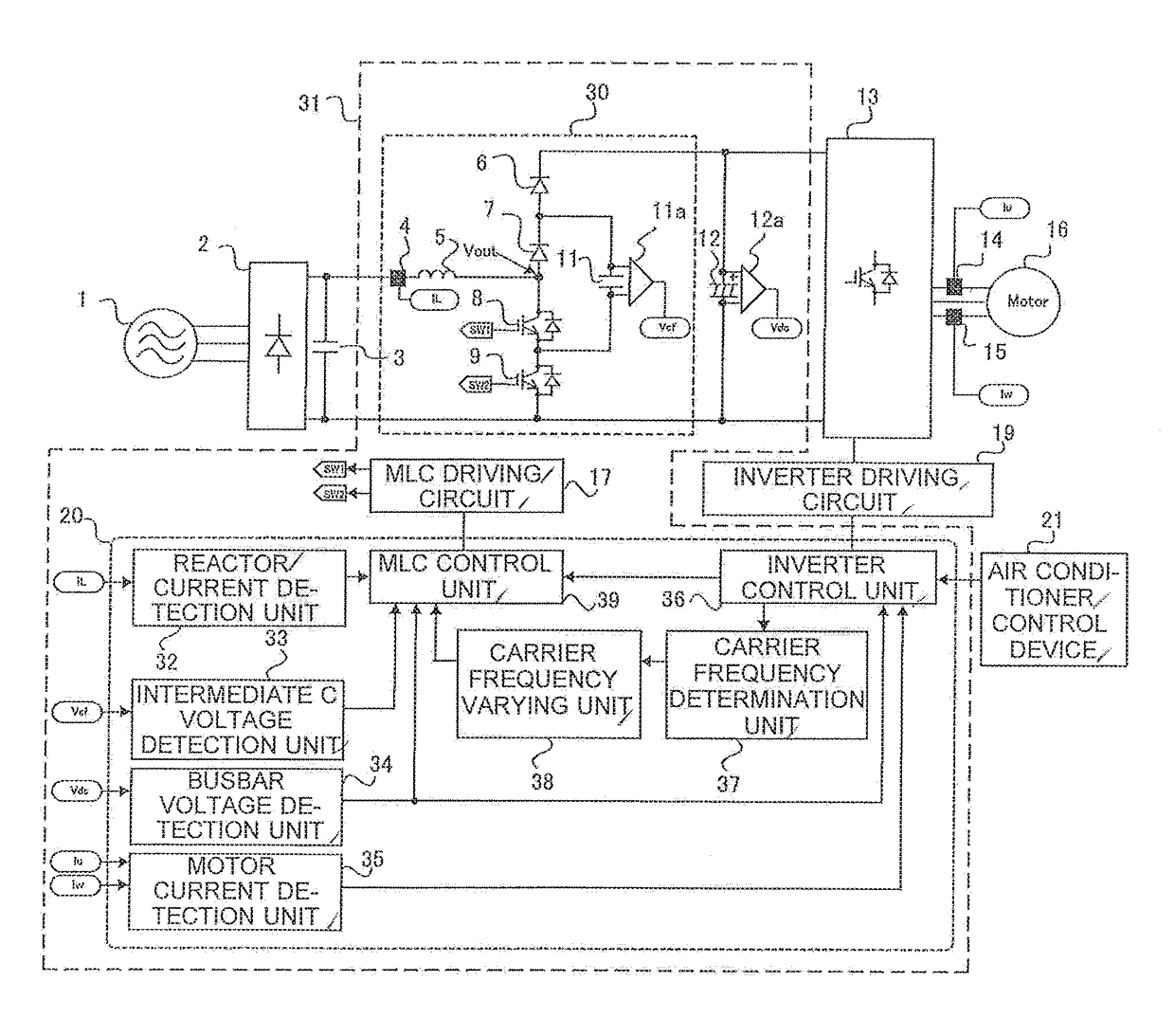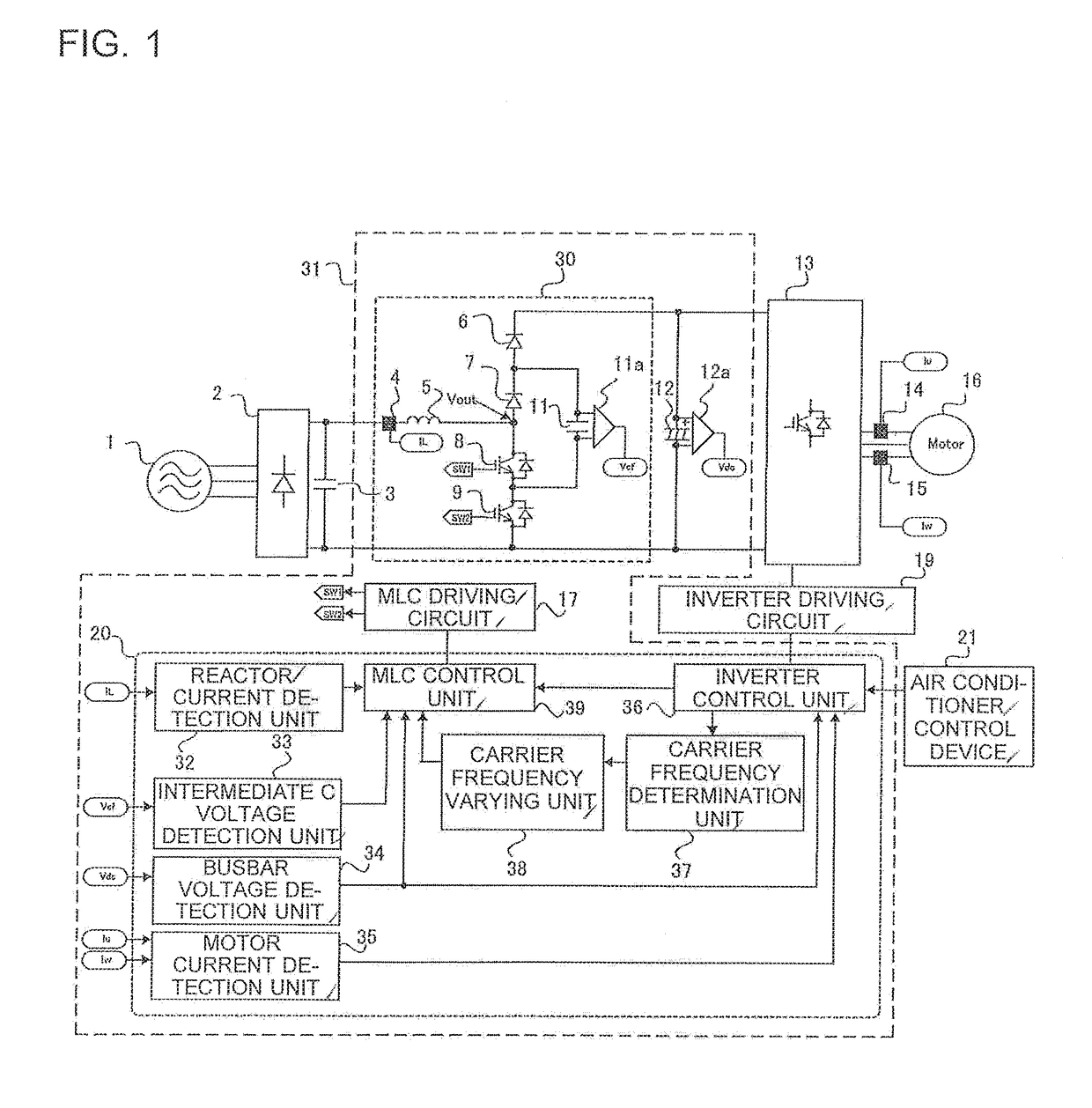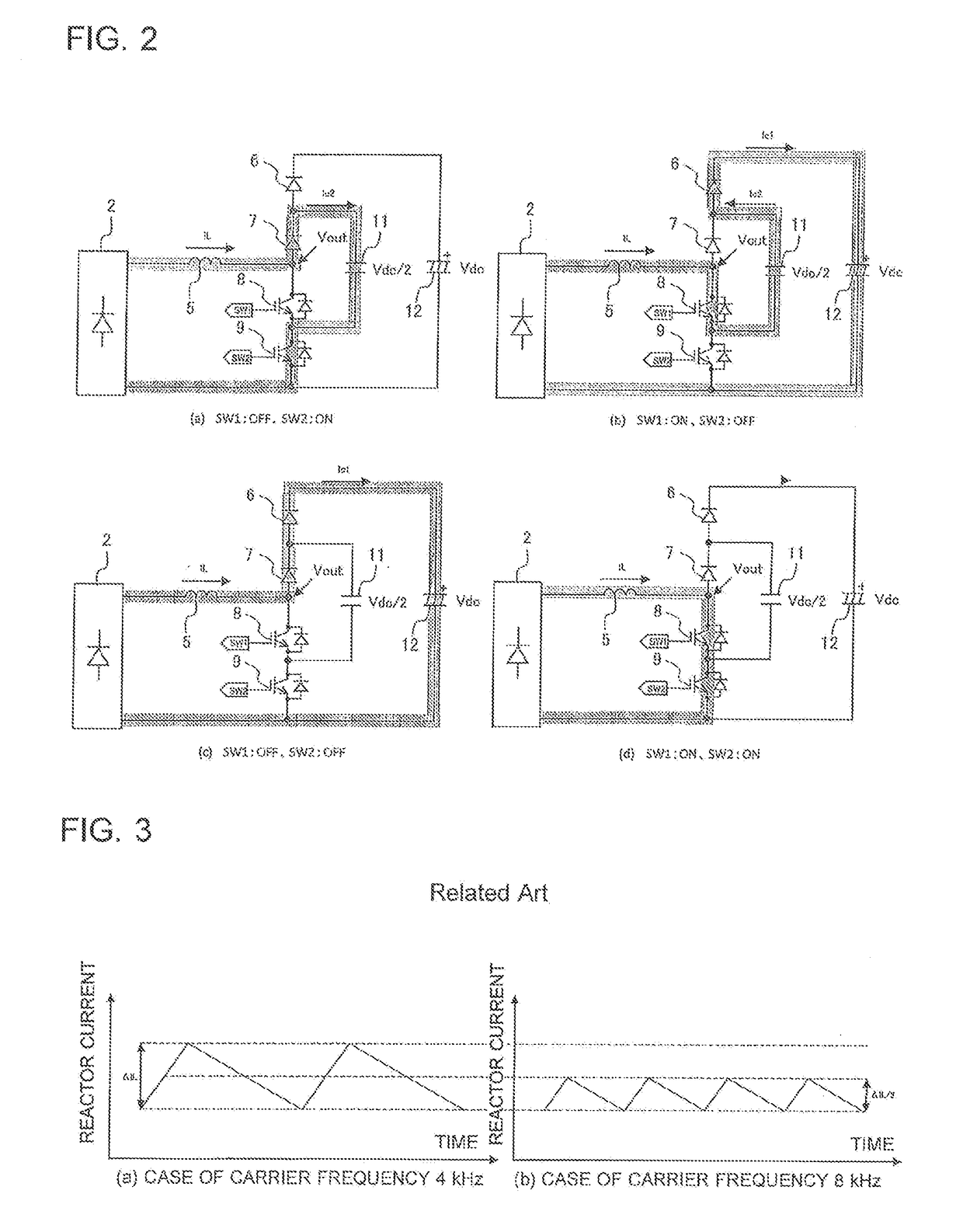Power conversion device and refrigeration cycle apparatus
a technology of power conversion device and refrigeration cycle, which is applied in the direction of refrigeration components, mechanical energy handling, light and heating apparatus, etc., can solve the problems of increasing the current of the compressor, and reducing so as to reduce the carrier frequency, improve the efficiency of the converter, and reduce the loss caused by switching
- Summary
- Abstract
- Description
- Claims
- Application Information
AI Technical Summary
Benefits of technology
Problems solved by technology
Method used
Image
Examples
embodiment 1
[0023](Configuration of Power Conversion Device)
[0024]Hereinafter, a power conversion device according to Embodiment 1 of the present invention will be described with reference to the drawings. FIG. 1 is a circuit diagram of the power conversion device power according to Embodiment 1 of the present invention. The configuration of the power conversion device will be described with reference to FIG. 1. The power conversion device in FIG. 1 includes a rectifier 2 as a rectifier circuit, a ripple filter 3, a reactor current sensor 4, a reactor 5, a first backflow prevention diode 6, a second backflow prevention diode 7, a first switching element 8, a second switching element 9, an intermediate capacitor 11, a voltage sensor 11a, a smoothing capacitor 12, a voltage sensor 12a, an inverter circuit 13, motor current sensors 14 and 15, an MLC driving circuit 17, an inverter driving circuit 19, a controller 20, and an air conditioner control device 21. The rectifier 2 converts an AC voltage ...
embodiment 2
[0053]Regarding a power conversion device according to Embodiment 2 of the present invention, the difference from the power conversion device according to Embodiment 1 will be mainly described.
[0054](Configuration of Power Conversion Device)
[0055]FIG. 7 is a configuration diagram of the power conversion device according to Embodiment 2 of the present invention. FIG. 8 is a diagram showing a relationship among a boost ratio, a ripple current, and a carrier frequency of the power conversion device in FIG. 7. The carrier frequency determination unit 37 in Embodiment 2 determines a carrier frequency on the basis of a condition obtained from the MLC control unit 39. The relationship among the carrier frequency, the ripple current ΔI, and the boost ratio in MLC is a relationship as shown in FIG. 8. Here, the boost ratio is a ratio between a voltage output by the rectifier 2 and a voltage after boosting. It is found that the ripple current decreases as the carrier frequency increases, and ...
embodiment 3
[0059]In Embodiment 3, an example where the power conversion device according to Embodiment 1 or Embodiment 2 is applied to a compressor 51 of an air conditioner will be described.
[0060](Configuration and Operation of Air Conditioner)
[0061]FIG. 9 is a configuration diagram of an air conditioner according to Embodiment 3 of the present invention. Hereinafter, the case where the power conversion device according to Embodiment 1 or Embodiment 2 is applied to the compressor 51 of the air conditioner will be described with reference to FIG. 9.
[0062]A power conversion device 101 shown in FIG. 9 is the power conversion device according to Embodiment 1 or Embodiment 2, and is configured to be supplied with power from an AC power supply 1 and supply the power to the motor 16 to rotationally drive the motor 16. The motor 16 is connected to a compression element 51a, and the motor 16 and the compression element 51a form the compressor 51 which compresses refrigerant.
[0063]A refrigeration cycle...
PUM
 Login to View More
Login to View More Abstract
Description
Claims
Application Information
 Login to View More
Login to View More - R&D
- Intellectual Property
- Life Sciences
- Materials
- Tech Scout
- Unparalleled Data Quality
- Higher Quality Content
- 60% Fewer Hallucinations
Browse by: Latest US Patents, China's latest patents, Technical Efficacy Thesaurus, Application Domain, Technology Topic, Popular Technical Reports.
© 2025 PatSnap. All rights reserved.Legal|Privacy policy|Modern Slavery Act Transparency Statement|Sitemap|About US| Contact US: help@patsnap.com



